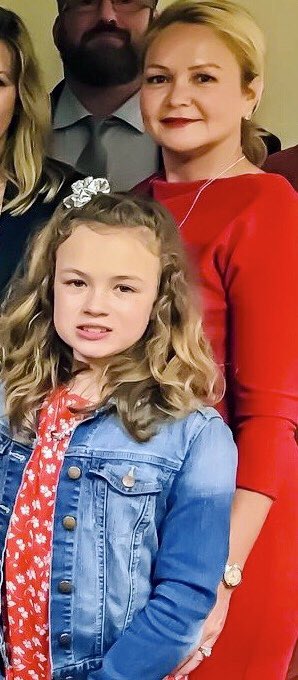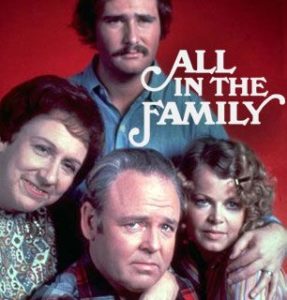Marilyn Muller is the mother of a 12 year-old child with dyslexia. She is a retired SmithBarney Financial Advisor turned full-time mom and accidental volunteer activist. Through her daily efforts she advocates for evidence-based literacy practices in public school classrooms for the equitable benefit of each vulnerable child.
I didn’t lay in a hospital bed for 51 days to lose my only biological child to illiteracy. Yet I almost did.
This isn’t supposed to happen because each American student is entitled, according to the federal law IDEA (Individuals with Disabilities Education Act), to a free appropriate public education, or FAPE, as well as necessary services, accommodations, and therapies.Yet currently our nation’s public education system is failing to deliver this promise, especially to the 1 in 5 children that are dyslexic.
As the mother of a child with dyslexia, I am passionate about helping under-identified neurodiverse children. Our six-year journey from public school to a specialized private school for students with language-based learning differences offers some insights to get our nation back on track.
Most people need to be able to read to do their jobs at work or home. Yet in America 36 million adults lack the basic literacy skills needed to sustain employment and funding continues to be cut at the state and federal level. A full 30% of the professional workforce fits the current federal definition of having a disability. More than 60 million lack basic math skills necessary to work a cash register or understand a bus schedule. Every year, one in three young adults drop out of high school. The costs of low literacy are estimated to be around $225 billion due to loss of tax revenue from unemployment, reduced workforce productivity, and crime. More than two-thirds of students with low literacy skills in 4th grade end up in jail or on welfare.
In other words, dyslexia isn’t cheap. It can rob children, parents, siblings, and families of time, money, emotional, mental and physical health. It can steal your soul and shred family and personal relationships. Dyslexia does not care about your race, gender, social status, location, religion or sexuality. It’s a human condition. It’s never going away.
Our battle began in utero: Preterm labor at 26 weeks, followed by 7 weeks of hospital bedrest and an emergency c-section at 33 weeks. But Lauryn and I are fighters! She started Kindergarten in the Fall of 2013, eager, bright-eyed, and innocent. Her teacher, a veteran with over 25 years in early education, felt safe and reassuring but Lauryn struggled with early literacy skills from day 1, her ego and self-worth increasingly tarnished each school day.
All of her classmates started the year as bronze level readers. After 180 days of frustrating stagnation, Lauryn remained the only bronze level reader by June, her peers progressing to silver, gold, and even platinum in the same time frame. During our final Parent-Teacher conference her teacher shared, “in hindsight, I should have referred her to the Jump Start reading program.”
I was devastated: Why were we just hearing this now? I asked for tutor recommendations and settled on a first grade teacher to work with Lauryn that summer. I reached out to the Language & Emotional Assessment Program at Massachusetts General Hospital (MGH) to schedule a private neuropsychological evaluation but the waitlist was more than a year long. Lauryn would continue her struggle through 1st grade with each academic task. I watched in dismay as my bright, articulate, gregarious little girl turned inward from frustration, with daily anxiety over school and learning.
Her first grade teacher kindly provided us with easy readers so we sat together with them each night. Little did I know she was memorizing these books, not reading or sounding out the words. She struggled with simple spelling and arithmetic too. These struggles continued into 2nd grade but I focused intently on the help MGH would surely provide at her upcoming private evaluation in December.
That day finally arrived. After five hours of grueling waiting, Dr. Forchelli informed us it would take another two weeks to compile all the results into a written report to be reviewed during a Parent Feedback Meeting. Fourteen more days of restless nights to learn what my intuition knew two years ago: Lauryn had both incredible strengths and devastating weaknesses, which explainied why she presented as a bright, articulate, creative little girl with a vast vocabulary and long-term memorization skills yet could not grasp any traditional classroom instruction because she had a specific learning disability in reading and math.
In other words, Lauryn had dyslexia.
Dark days immediately followed Lauryn’s diagnosis. I was overwhelmed with uncertainty, concern, and confusion, escalating into anxiety and depression. I had to rally myself just to pack her lunch and assist in preparing her for the day, modeling optimism yet feeling in the direct path of a tsunami. The short drive to school felt long as I tried to rally Lauryn, knowing she was walking into an unsuitable environment where she felt like a failure every day. Before her diagnosis I would head straight to a workout after drop-off. After dyslexia I drove straight home, crawled into Lauryn’s bed, and cried for hours.
Soon after, I met with the principal and provided him a copy of her private evaluation report. He expressed bewilderment as I wondered aloud how they missed such obvious deficits. I thought I would hear from him, “no worries, Mrs. Muller, we have a protocol for that.”
Quite the opposite.
For the next 18 months we wasted valuable time in IEP [Individualized Education Plan] meetings with our district staff, often with our privately-paid child advocate and Dr. Forchelli. The answer from our “Team?” :“No, we don’t do that here.” Or, “No, we don’t have a language-based classroom, nor are there any plans to add one. But, due process is available to you if you like.”
This is how my district collaborated with parents of an 8 year old child to provide her the FAPE she is entitled to. In Massachusetts, due process is an expensive last resort. Families pay big attorney fees and lose the majority of all hearings even in cases of blatant violations of civil and disability rights. So after 18 months of intense meetings and debates over appropriate goals, benchmarks, and services, Lauryn finished third grade reading well below grade level and failed to meet standards in both math and ELA on the state assessments. We had to make the heart-wrenching decision to unilaterally place Lauryn in an expensive private school when she began fourth grade.
What happened once she was placed in a school that understood her needs? Lauryn completed fifth grade reading at grade level and will began sixth grade there last September. After 6th grade is over we will have spent the entire amount we had earmarked for four years of college tuition.
My child will never be a public school statistic again. But many of the 5 to 15 percent of Americans with dyslexia — that’s 14.5 to 43.5 million children and adults — will be statistics until we succeed in achieving FAPE in each public school, for each citizen nationwide. The right interventions — like teachers who understand dyslexia methodology — should be mandatory, not optional, and all children should have literacy screenings in both pre-Kindergarten and Kindergarten.
I have seven siblings. We were raised on prayer, faith, hard work, and family first, our wealth defined by kindness, good deeds and service to others. I’ve tried to instill these values in Lauryn yet she still prays that mommy will win the lottery so we can fulfill my goal to open a free school for children with language-based learning differences. The tide is beginning to shift as dyslexia awareness spreads. Arkansas is revamping its dyslexia screening at a price of $6 million a year. South Carolina opened The Lakes & Bridges Charter School to meet the needs of children with dyslexia and related reading disorders. But we need substantially more: Full funding of IDEA and access to FAPE for all children with disabilities. We can achieve this through implementing structured literacy in each classroom. I often marvel at how much we know about the science of reading (thanks to Dr. Samuel Orton and Anna Gillingham, as well as others) but little has changed in education for nearly 100 years.
I’m tired of waiting. Are you?



